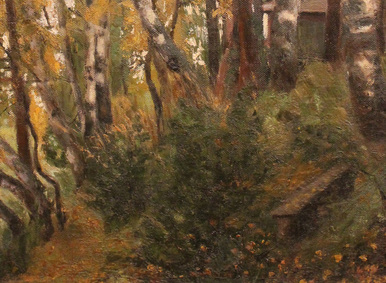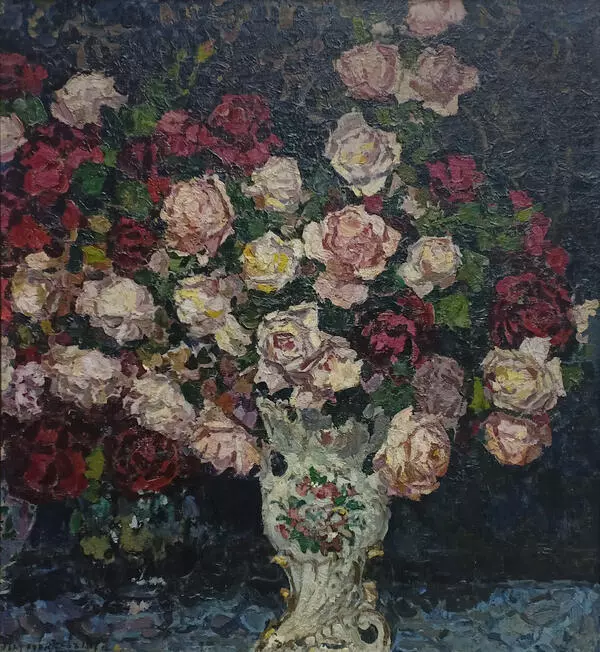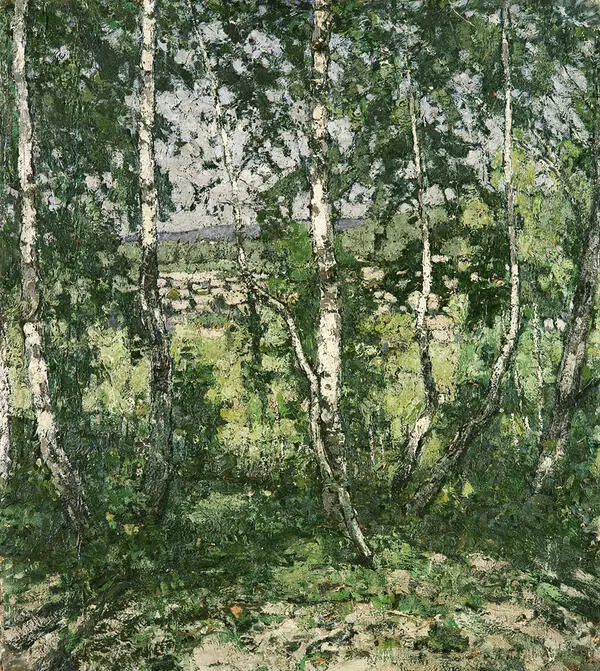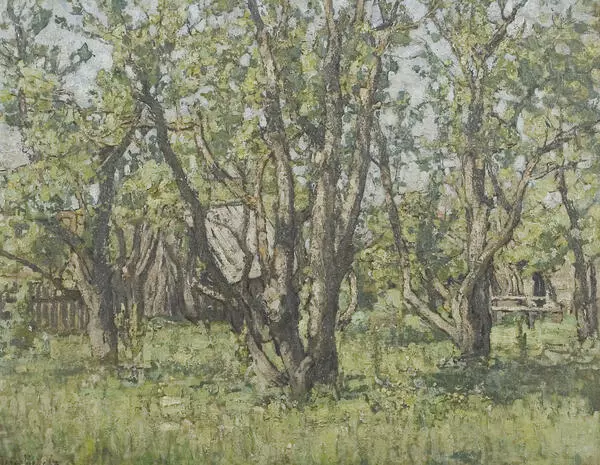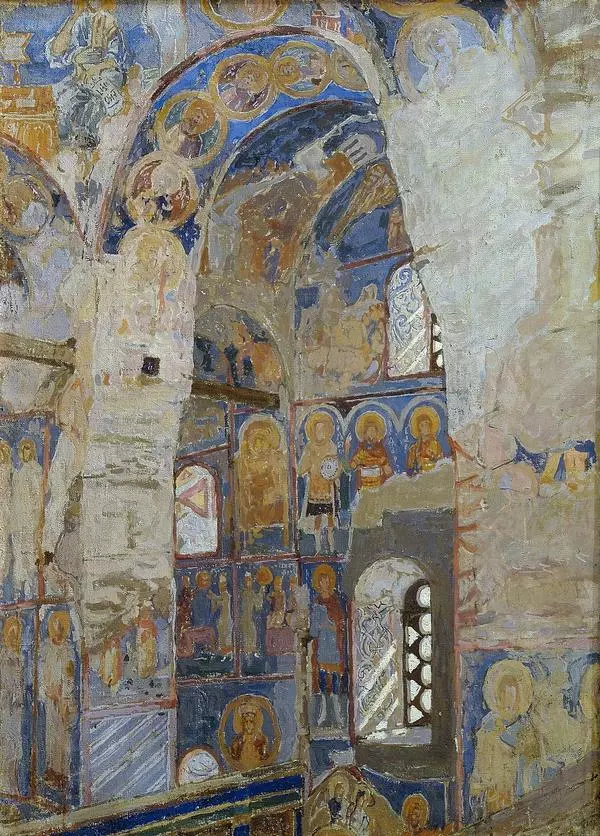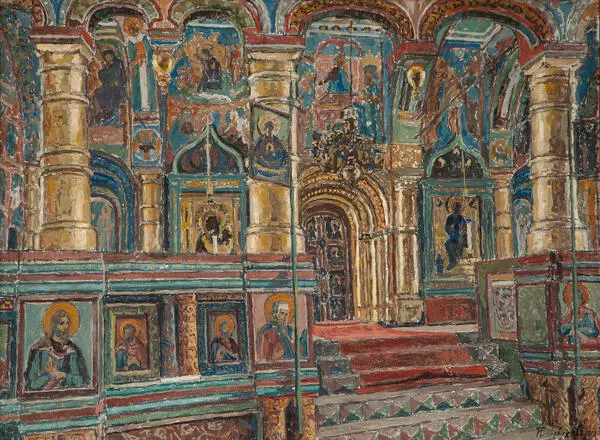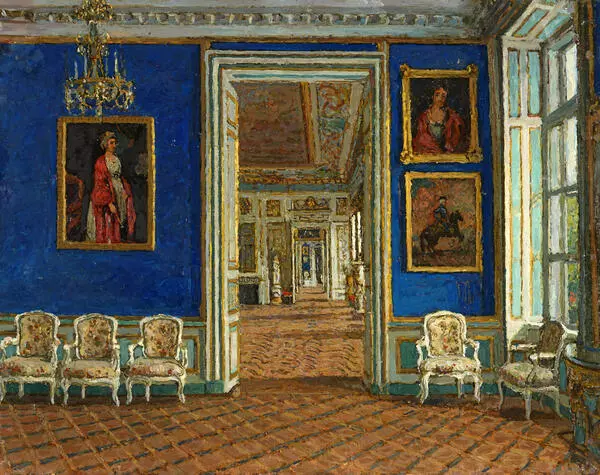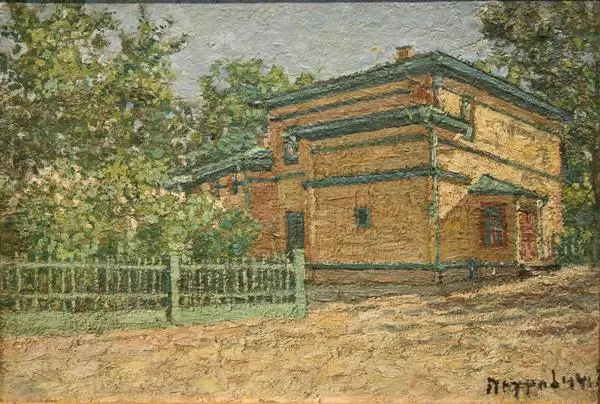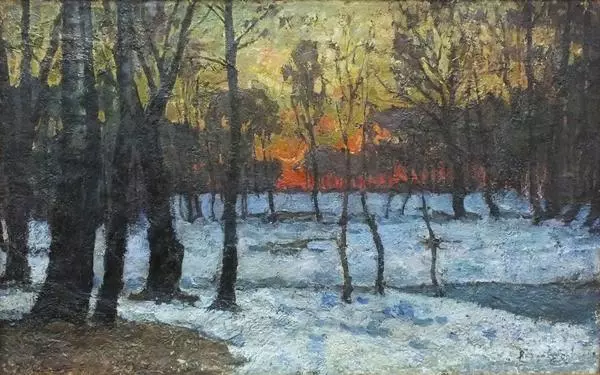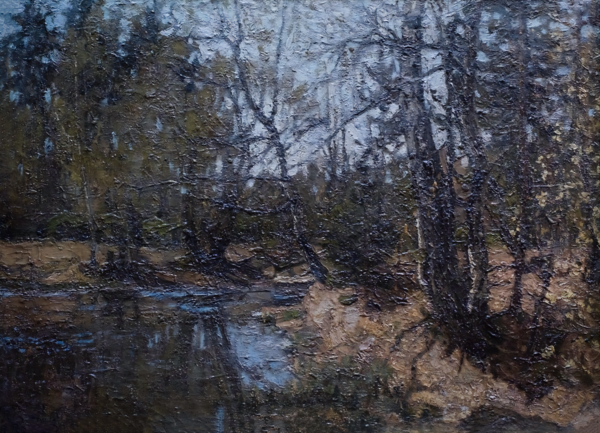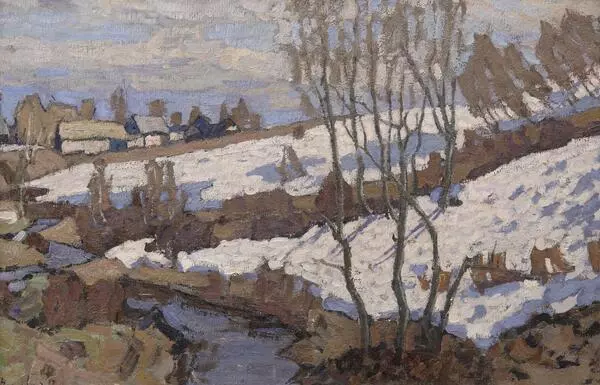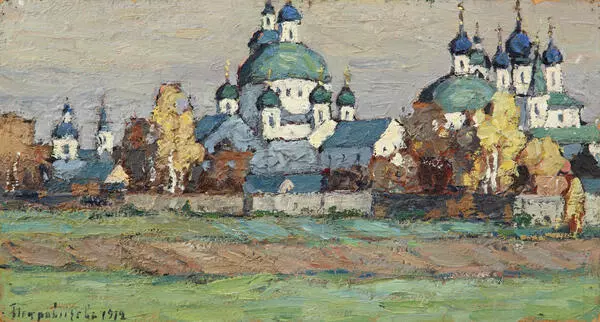Pyotr Ivanovich Petrovichev was an artist known for his lyrical landscapes. He was born in 1874 in Yaroslavl Governorate. He developed his initial professional skills as a painter at the Rostov Museum of Antiquities, where he was engaged in the restoration of icons. It was during his years at the museum that the painter Vasily Vasilyevich Vereshchagin noticed him and advised him to enter the painting department of the Moscow School of Painting, Sculpture and Architecture.
Pyotr Petrovichev’s talent was recognized when he participated in exhibitions of the Union of Russian Artists and the Society for Travelling Art Exhibitions, as well as in the showcases of Russian art in Paris.
The works of Pyotr Ivanovich Petrovichev are kept in the Tretyakov Gallery, the Russian Museum, and in all major regional museums of the Russian Federation and private collections.
Petrovichev’s main focus was painting lyrical landscapes and architectural views of ancient Russian cities. The Novokuznetsk Art Museum displays his work titled “The First Spring”.
“The First Spring” was painted in the spring of 1918. Pyotr Petrovichev at that time was already an established, recognized artist. However, the drastic changes taking place in Russia during that period could not but affect the fate of the artist. In the spring of 1918, according to the memoirs of the artist’s wife Olga Ernestovna Petrovicheva, they left for Vladimir, where Petrovichev fruitfully worked, painting oil studies and making drawings in pen and ink. The difficult financial situation in which the family found itself and the uncertainty of the future — all this reflected on the artist’s inner state and, consequently, on his work.
Petrovichev repeatedly addressed the theme of
spring. In the presented painting, spring does not carry an emotional charge or
dynamism: the composition strives to follow the golden ratio formula, while the
balance of equivalent dark and light spots and horizontal and vertical rhythms
gives rise to a contemplative mood. The restrained and subdued color palette
creates an image of spring slowly entering its domain, nature seems to have
been rendered motionless in anticipation and expectation of an unknown and inevitable
future.

